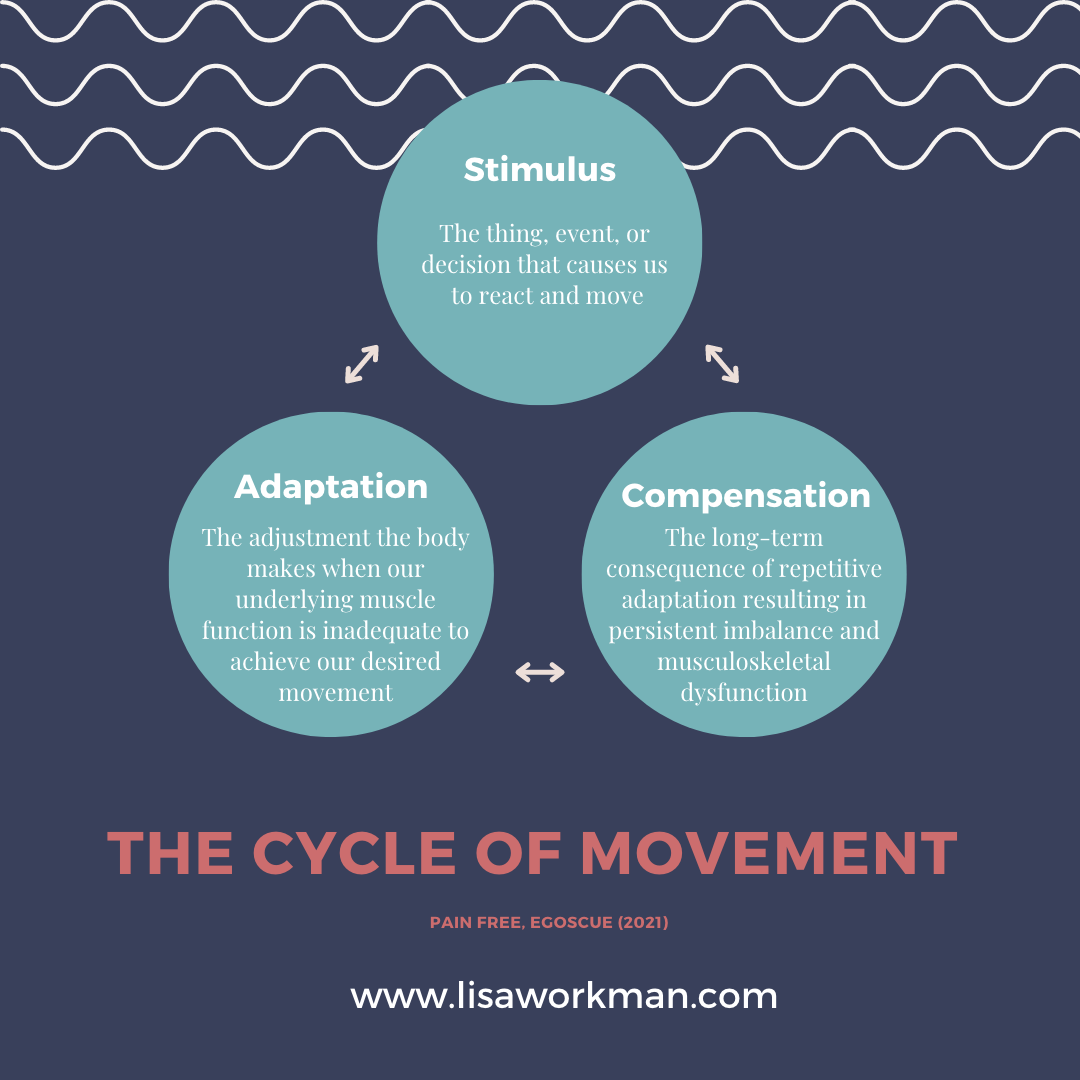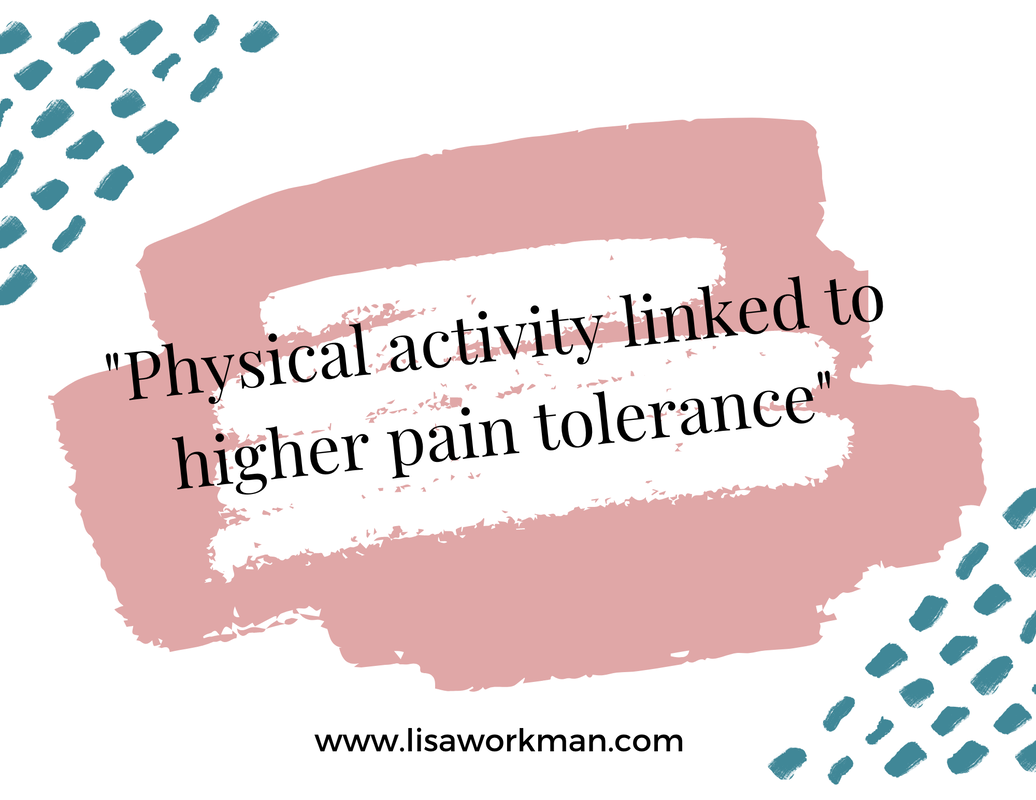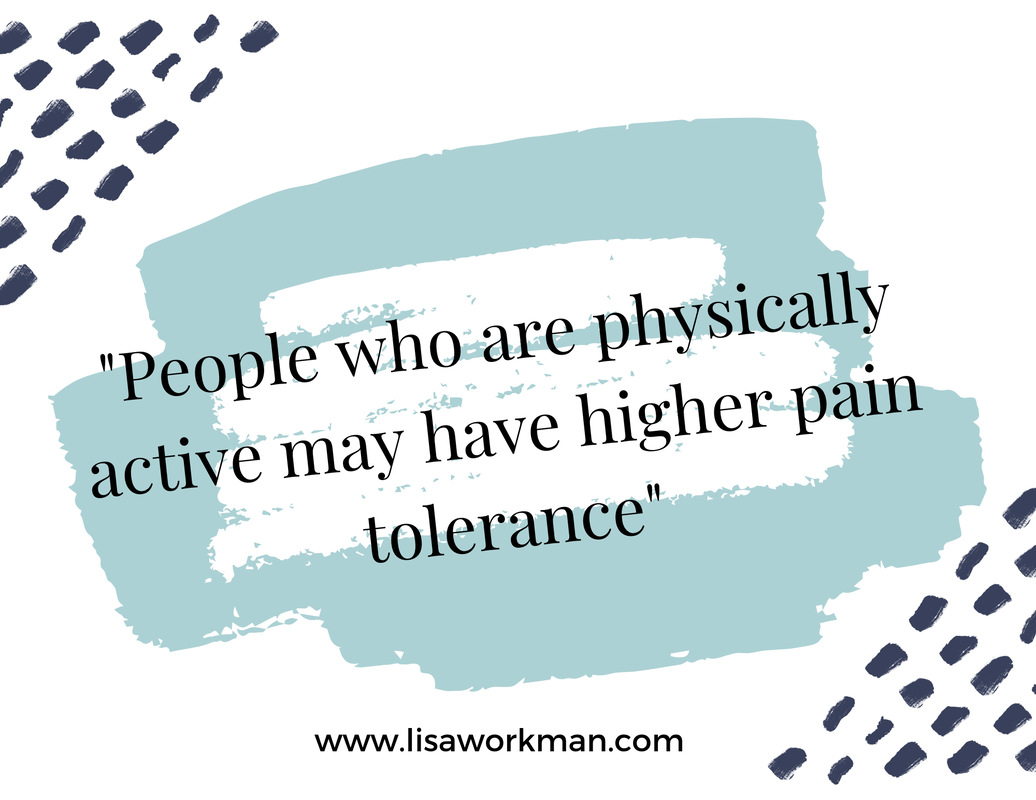|
Tori* had been seeing me for a while and was still struggling with her arthritic hip. What she shared with me was anytime she was leaning over to put on her shoes, paint her toe nails, pick something up from the floor or pour dog food into her dog's dish, she had lots of pain in front of her hip. The pain caused her to stop moving forward, almost like it froze her on the spot. This happened both while standing and sitting. However, she noticed the pain was more substantial while she was sitting and wanting to tie her shoe laces. She was frustrated and annoyed that she just couldn't get these day to day tasks done. Then I suggested we try three seated movements. Click on the video below to find the exact three movements I shared with Tori in my next instalment of Real Moves for Real Life! Now, after trying the three movements, can you noticed an increased ability to lean over AND without pain?!
I'd love to hear how your bending forward is going for you now! Simple hit reply and let me know. Nothing fancy. Small moves, big impact. And it works. Stay well and happy moving, Lisa *Name changed for confidentiality
0 Comments
It's Wednesday June 21! AND it is International Day of Yoga. 🎉 International Day of Yoga is celebrated every year on June 21st, following its inception in the United Nations General Assembly in 2014, to promote physical, mental, and spiritual well-being through the practice of Yoga. It is a day to celebrate the ancient Indian practice that has gained worldwide recognition for its numerous health benefits. Yoga is not just about physical exercise, but also about finding inner peace and balance. On this day, people come together to practice Yoga and celebrate its transformative effects on their lives. I couldn't let this day go by without sharing a 25 minute practice with you! Whether you are a seasoned Yoga practitioner or just starting out, take some time on this day to connect with yourself and experience the many benefits of Yoga. Let us all come together and celebrate the International Day of Yoga! Stay well and happy moving, Lisa Hunger. Check. 🍽 Thirst. Check. 🥛 Urge to visit the bathroom. Check. 🚽 These are all signals that we have learned to acknowledge and act on in our lives. Pain. Hmmm. 😩 What is the pain signal trying to tell me? Do I allow time to understand the body's pain signal(s)? Here is the thing. Most of us have a good understanding of what needs to happen with hunger, thirst and bathroom breaks. We usually don't know what to do about our pain. It stops us in our tracks. Do we rest? Do we stretch? Do we apply heat or cold? Should I take a medication and which one? So when I saw this diagram below, it made me think, I need to share this with my community! It will help us unpack the signal of pain a bit more. Thanks to Pete Egoscue. In this book, Pain Free, he shares the cycle of movement (what I call it) and how it relates to your pain. The cycle goes like this. If we can't meet the demands of the stimulus, we adapt. That adaptation allows us to move. If we consistently rely on the adaptation to move, compensation creates persistent imbalance. Such imbalance impacts our ability to respond to subsequent stimuli, and the cycle starts anew. Pain begins to creep in when the adaptation and compensation no longer serves us. Because adaptations are neither good nor bad. They can help us out for a period of time or not. The body might very well be saying, "thanks jaw for clenching when I climb the stairs but its not your job to move me up the stairs". Maybe the signal of jaw pain is actually related to your struggle to climb a flight a stairs. I know. It sounds weird. However, our bodies adapt to what demands we put on them. And the way we respond (adaptations) are not always appropriate and can lead to a built in pattern of compensations. Insight to Action: Start to notice the stimulus' in your life. Heck, make a list of them that you do on a regular basis. Then begin to notice any adjustments your body needs to make to meet the demand of the stimulus. Overtime, is your body responding with a balanced or imbalanced approach? AND what is the associated pain trying to tell you? It takes work to truly be aware to what your pain signals are. Have you ever heard of different types of pain? Does that drive you mad to have someone ask you what type of pain you are feeling? All you want to say is, "its pain!". This is where YOU have the ability to start to scan your signals and really decide (in your own mind) what the signals mean to you. Need help to move the way your body needs and build your awareness to the signals your body gives you? Respond directly to this email and let's chat! I would be honoured to help. Stay well and happy moving (while noticing your pain signals), Lisa P.S., In case you missed last week's email, it was a goody! Click here to read more about your pain signals and what you can do about it! I was thinking of you this week as these news headlines came across my desk... So many people deal with pain on an ongoing basis and it can become one of the biggest barriers for them to move the way they want to and live their best lives. Here's the thing, moving your body can actually HELP you with your pain levels. Habitual physical activity has been shown to have a significant influence on pain tolerance in the general population. Studies have found that individuals who engage in regular physical activity have higher pain thresholds and are better able to tolerate pain compared to sedentary individuals. Why? It is believed a pain-inhibitory response is present immediately following an acute bout of exercise. It is referred to as exercise-induced hypoalgesia. Said simply, it is due to the release of endorphins during exercise, which are natural painkillers produced by the body. Amazing! And the super incredible part of it is you can move your body with the parts that are actually not bothering you with pain. For example, you've got that pesky arthritic knee, rather than choosing to ride a stationary bike, maybe you decide to do some upper body resistance exercises instead. Or maybe your bumped shoulder is holding you back. Why not go take a walk instead where you can keep your arm swing to a minimum. Your physiology will still give you that natural painkiller benefit regardless of which body part is moving! In the latest research, it suggests that remaining physically active, becoming active, or boosting activity is linked to higher pain tolerance. Bottom line, to help avoid and manage persistent pain, it is critical to participate in some form of physical activity. Need a place to start? Jump over to my Youtube channel to find a variety of ways to get your body moving today! Stay well and happy moving, Lisa P.S., If you love to read the data, here's the original scientific article. If you'd like the Coles' notes version, check out this article or this one or this one. |
AuthorMissed my most recent newsletter? Don't worry, I've got your back. Find all my exclusive letters here on this blog. ~Lisa Archives
July 2024
Categories |




 RSS Feed
RSS Feed